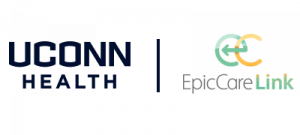Purpose: This policy is intended to ensure that appropriate provisions have been made for pre-, intra-, and post-operative care of animals undergoing surgical procedures as defined in the Animal Welfare Act, the Guide for the Care and Use of Laboratory Animals, UConn Health’s Assurance with NIH, and AAALAC-i guidelines.
Attending Veterinarian (AV) Responsibilities:
1. Meet with the Principal Investigator, or his/her designee, prior to the submission of an IACUC protocol in which surgical procedures will be performed;
2. Provide support for surgeries involving USDA-regulated non-rodent species pre-,intra-, and post-surgery; and
3. Final determination of classification of survival surgery being major or minor (see table 1).
Principal Investigator (PI) Responsibilities:
1. Consult with the AV prior to submitting an animal care and use protocol in which surgical procedures will be performed;
2. Perform surgical procedures only as described in the approved protocol;
3. Provide pre- and post-surgical care of rodent, amphibian, and fish species and documentation of care given to all animals subjected to any surgical procedure: and
4. Provide training on the surgical procedure to all research personnel expected to perform the surgery.
Definitions:
Major Survival Surgery
Major survival surgery is defined as a procedure that will:
1. Penetrate and expose a body cavity (cerebral, thoracic, or abdominal);
2. Produce substantial impairment of physical or physiological function; and/or
3. Cause extensive dissection or transection of tissue.
Minor Survival Surgery
Minor survival surgery is defined as a surgery that will not:
1. Penetrate and expose a body cavity; and/or
2. Produce substantial impairment of physical of physiological function.
N0n-survival Surgery
Non-survival surgery is defined as a surgical procedure that is performed in which animals will be euthanized prior to any recovery from anesthesia.
Multiple Major Survival Surgery (MMSS)
MMSS is defined as one animal experiencing more than one major survival surgical procedure.
Action:
All survival surgery requires the following:
Preparation of Location and Instruments
1. Surface area cleaned with a disinfectant (e.g., 10% Clidox) prior and after the surgery.
2. Disinfection of all instrumentation to be used (e.g., autoclaving prior to use, cold sterilization by the use of an appropriate aldehyde). Please refer to the CCM SOPO for aseptic rodent surgery and the CCM SOP for surgery on USDA covered species for specific requirements.
3. Surgery in rodents, amphibians, and fish may be performed in the PI laboratory if approved in the animal care and use protocol. Surgery in non-rodent USDA-regulated species must be performed in a dedicated CCM OR room unless the performance in another space is approved by the IACUC.
4. In general, if multiple surgeries are performed in a single day, the use of separate sterile packs of instruments should be used. If not possible, instruments should be sterilized in-between animals using a hot bead sterilizer. Please refer to the CCM SOP for aseptic rodent surgery and the CCM SOP for surgery on USDA covered species for specific requirements.
Preparation of Animals
1. Acclimation to the facility is required; refer to the IACUC Policy on Animal Stabilization for specific requirements.
2. Assessment for normal well-being (e.g., smooth and glossy hair coat, good body condition, normal and unobstructed breathing pattern).
3. Pre-operative fasting. This is generally not required for rodents (rodents cannot vomit); however, for gastrointestinal surgeries, this may be helpful.
4. Hair from surgical site is required to be removed. Please refer to the CCM SOP for aseptic rodent surgery and the CCM SOP for surgery on USDA covered species for specific requirements.
Preparation of Surgeon
1. Surgeons must wear a clean lab coat over their regular street clothes. Alternately, surgeons may don scrubs, but a clean lab coat is still required.
2. Surgeons must scrub hands with an antiseptic surgical scrub preparation and done sterile surgical gloves. CCM SOP for aseptic rodent surgery and the CCM SOP for surgery on USDA covered species for specific requirements.
3. Sterile gloves should be changed between surgeries and after contact with non-sterile areas.
4. If surgeries are performed in a CCM procedure rom, standard personal protective equipment (PPE) must be worn.
5. All surgeons must be appropriately trained in the surgery to be performed.
Documentation of Post-surgical Animal Care
1. There must be written documentation for all post-surgical monitoring performed on animals. For non-rodent USDA regulated species, this documentation must be in the animals’ medical record.
2. Animals may not be returned to facility housing until they have recovered from anesthesia. Procedure cards must be placed on the cage cards stating what surgical procedure has been performed and the date of performance.
3. Post-surgical monitoring must be performed as described in the approved animal care and use protocol.
Special Considerations:
Non-survival Surgery
1. Non-survival surgery does not require the use of sterilized instruments or sterile surgical gloves. Instruments must be clean but need not be sterile.
2. Animal acclimation times for non-survival surgery are not as stringent as those for survival surgery. Refer to the IACUC Policy on Animal Stabilization for specific requirements.
3. Adequate anesthesia is required for non-survival surgeries.
4. If the non-survival surgery is of an extended duration, attention to aseptic technique may be more important in order to ensure stability of the model and a successful outcome.
Multiple Major Survival Surgery
1. MMSS requires approval by the IACUC.
2. Researchers wanting to perform MMSS must provide justification in order to have IACUC approval. Examples of acceptable justification includes:
a. MMSS being related components of a single research objective;
b. MMSS being used to conserve scarce animal resources; or
c. MMSS being used for clinical teaching purposes
3. PIs may need to provide information on the timing between the surgical procedures, justification of animal numbers subject to MMSS, and the potential significance of findings to be obtained from performing MMSS in order to obtain IACUC approval.
Surgery on Fish and Amphibians
1. Fish and amphibians must be kept moist during surgical procedures by use of sterile saline.
2. Pharmaceutical grade Tricaine is to be used for anesthesia.
References:
The Guide for the Care and Use of Laboratory Animals, current edition
CCM SOP Guidelines for Aseptic Rodent Surgery
CCM SOP Surgery Guidelines for USDA Covered Species
IACUC Policy on Animal Stabilization
Effective Dates: February 23, 2023 through December 31, 2025
This policy has been approved by a majority vote of the IACUC Members
Table 1: Examples of Major and Minor Surgical Procedures
| Major Surgical Procedure |
Minor Surgical Procedure |
| Laparotomy/Laparoscopy |
Wound Creations |
| Thoracotomy |
Subcutaneous Implantations |
| Craniotomy |
Superficial Vascular Cutdown |
| Joint Replacement |
Castration |
| Limb Amputation |
Percutaneous Biopsy |
| Orthopaedic Surgeries |
|
| Intracranial Sterotaxic injections |
|

 EpicCare® Link at UConn Health is a secure web portal that offers site monitors easy access to clinical trial study data. There is no cost to access the portal, and there’s no software or hardware to maintain. EpicCare Link is available 24/7 via any computer with an Internet connection and an up-to-date browser. Supported browsers include Chrome version 50 or later, Microsoft Edge version 79 or later, and Internet Explorer version 11.
EpicCare® Link at UConn Health is a secure web portal that offers site monitors easy access to clinical trial study data. There is no cost to access the portal, and there’s no software or hardware to maintain. EpicCare Link is available 24/7 via any computer with an Internet connection and an up-to-date browser. Supported browsers include Chrome version 50 or later, Microsoft Edge version 79 or later, and Internet Explorer version 11.